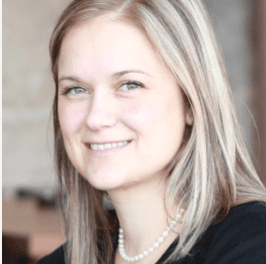Phonak ABCs of eAudiology #8: 10 Steps to Client Selection & Other Considerations for eAudiology
The Phonak ABCs of eAudiology is a handbook of step-by-step guides for incorporating eAudiology and Phonak eSolutions into daily hearing care practice. Each guide has been written by a renowned international expert in this field. A comprehensive range of considerations have been broken down into easy-to-follow steps towards practice implementation. Following the 10 steps in this series of implementation guides could see hearing care professionals up and running with eAudiology services in your practice very soon, benefiting from improved workflows and cost savings, providing your clients quality care in a way which is most convenient to them.
In order to select appropriate clients for eAudiology, there are some things to consider with regard to WHO the person is, or who will benefit most from this form of service delivery.
As time evolves, we are likely to improve or refine client characteristics, but as with face-to-face care, we should never expect to have the formula for the ideal candidate. Here we discuss some key questions and characteristics of the candidates who will likely benefit from this form of service delivery.
Where to start?
Step 1
Look within your clinic and organization and ask if you have the tools ready to offer eAudiology services to your clients.
- Do you have the tools in your clinic to offer eAudiology services?
- Computer, software, Internet, and fitting tools (see articles by Glista and Schnittker in this series).
- Do you have the support to offer eAudiology services?
- IT support for Internet privacy and security-related issues. Some organizations may need a special bypass to allow remote connections and adjustments (see article by Campbell in this series).
Step 2
Does your client have unmet needs that could be resolved with eAudiology services? Usually a survey/questionnaire or in-person discussion may be the best approach to determining the following from your client.
- Does your client travel long distances to attend face-to-face appointments?
- Does your client have a busy schedule, physical limitations, or mobility/transportation restrictions that limit how often they can see you for follow-up services?
Step 3
How does eAudiology address any of your client’s unmet needs? Determine the benefit of this service and then discuss it with your client
- Would eAudiology services, such as remote adjustments, facilitate ease of follow-up appointments for your client?
- What cost savings would these eAudiology services provide for your clinic as well as your client?
Step 4
Can you grow your practice by offering eAudiology services? Determine the population you are currently working with and assess whether there are segments of unreached clients that eAudiology could help you reach. A focus group or survey may unveil these niche areas.
- Are there clients who will visit your practice if you offered after-hour services?
- Are their clients who will visit your practice if you offered online, walk-in hours?
Step 5
What type of eAudiology services can you offer? This will be based on your needs assessment and the infrastructure that is available in your clinic, as well as your support system (ie, staff and IT).
- Will you offer remote appointments during the day?
- If so, what kind?
- Will you offer remote appointment after hours?
- If so, do you have the personnel and support to offer these services?
- What kind?
Step 6
Does your client have the right tools and knowledge to receive eAudiology services? After you have determined with your client that they will benefit from eAudiology services, use this step to provide support and set your client up for a successful eAudiology appointment with you. This may include installing the necessary software and doing an in-person mock/trial run.
- Do they have a phone with Internet services and Bluetooth connectivity (see Article 6 and Client Profiling Tool).
- Are they comfortable with using the tools that they have or need for their eAudiology appointments?
Step 7
Does your client have the support system necessary to complete successful eAudiology appointments with you? You may want to ask your client to determine if they have someone who could assist them if needed. This person may benefit from Step 6 as well.
- If needed, does the client have family or friends who could assist with any troubleshooting or connectivity issues that may arise before or during your appointment?
- If needed, does the client have someone who is available, comfortable with the technology, and could intervene and assess whether they are using the tools correctly?
Step 8
Is your client willing to try the eAudiology services that you are ready to offer them?
- Does your client see and understand the benefits that eAudiology services offer them?
- Is your client ready and willing to try out an eAudiology appointment with you?
- This is a salient question to ask your clients, because not everyone who could benefit from these services may be willing to try it.
Step 9
Does your client fit the profile of someone who would be ideal for an eAudiology appointment?
- Considering all the information you have gained from the above mentioned steps, would you conclude that your client would be an ideal candidate for eAudiology services?
- If you need more information, complete the Phonak Client Profiling tools.
Step 10
Prepare your talking points for introducing the benefits and opportunities that an eAudiology appointment will offer your clients. (see Article 7).
To download a PDF of the article, please click here: 10 Steps to Client Selection & Other Considerations for eAudiology
Are you up to the challenge?
I invite you to go through these steps with the next client who comes in to identify whether eAudiology will prove beneficial for them, and, if so, which specific services would be best for that particular client?An advanced move would be to assess your clients for the next week and discover which of your new, as well as returning, clients would benefit from remote adjustments.
Other Articles in the Phonak ABCs of eAudiology series below:
| 1. | Licensure and Stakeholder Support | William Campbell |
| 2. | Optimizing Your eAudiology Environment | Danielle Glista, PhD |
| 3. | Clinical Applications and Feedback Provision | Gurjit Singh, PhD |
| 4. | Employee Training | Karen Muñoz, EdD |
| 5. | Scheduling and Reimbursement | Rachel Higginbotham, AuD |
| 6. | Technology and Connectivity | Jean Anne Schnittker, AuD |
| 7. | Talking to Clients about eAudiology | Gina Angley, AuD |
| 8. | Client Selection and Other Considerations | Evelyn Davies-Venn, PhD |
| 9. | Family-centered Care and eAudiology | Joseph Montano, EdD |
| 10. | Record Keeping and Data Protection | William Campbell |
About the Author: Dr Evelyn Davies-Venn is an assistant professor at the University of Minnesota and teaches courses in hearing science, amplification, and diagnostic audiology. She is also the Director of the Sensory Aids and Perception Lab. Her research program is centered on understanding factors that drive individual variance in rehabilitation outcomes for individuals with hearing loss, especially in complex listening environments such as a busy restaurant or cocktail party. Her research aims to improve access to hearing health care and to optimize amplification outcomes for individuals with hearing loss.






